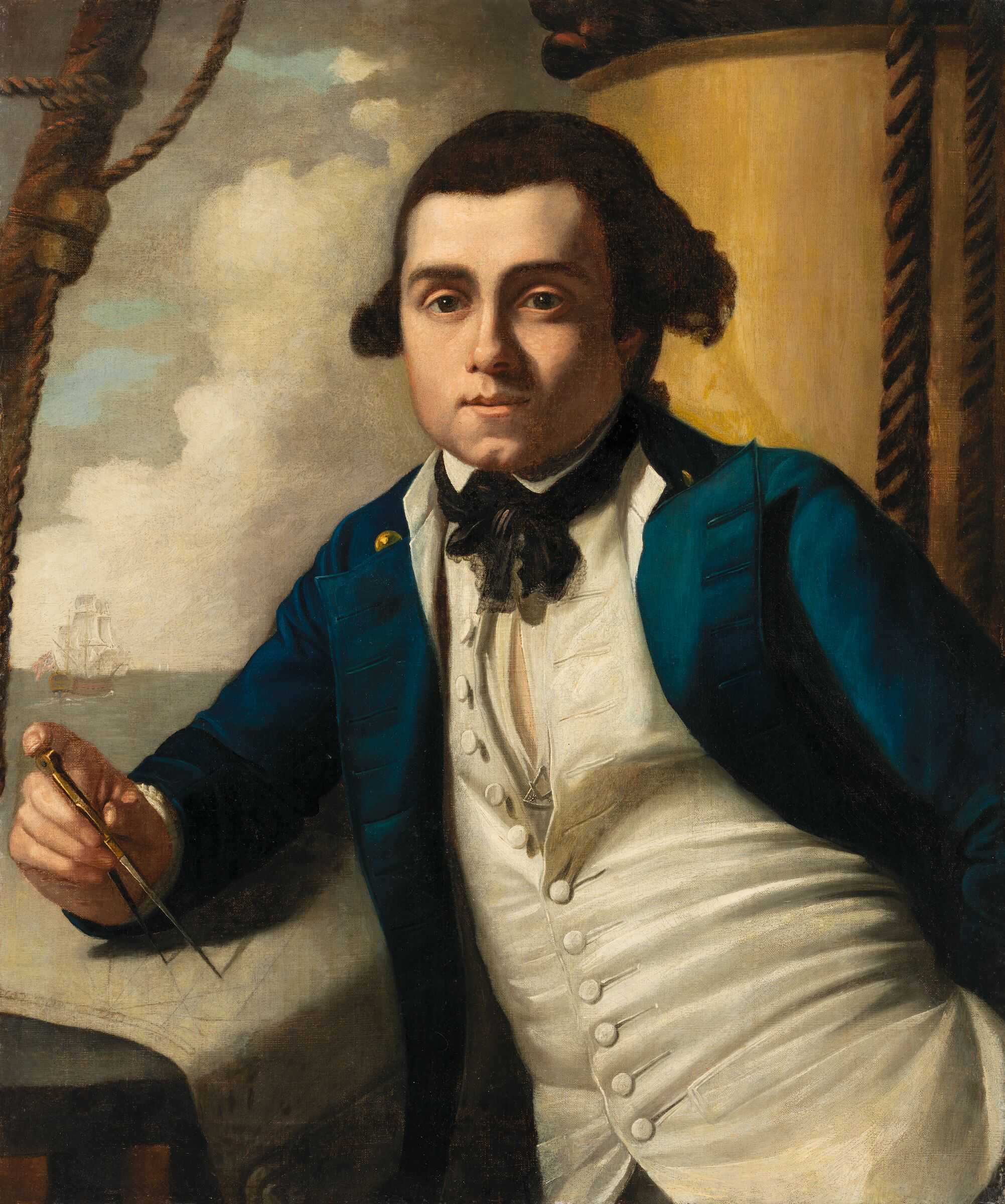Portrait of William Bligh, in master’s uniform c. 1776 by John Webber will be unveiled 11am, Tuesday 31 March 2015.
The National Portrait Gallery will, next Tuesday, unveil an exciting new acquisition of irrefutable importance to all Australians. Portrait of William Bligh, in master’s uniform c. 1776, attributed to John Webber, is one of the earliest portraits of the contentious, historical figure, and extends the Gallery’s remarkable collection of early colonial portraits.
On the occasion of the launch of the National Portrait Gallery Foundation, President, Mr Sid Myer AM recently announced this major acquisition, made possible by a most generous act of benefaction. He paid special tribute to Canberra philanthropists, Mrs Sotiria Liangis OAM and Mr John Liangis, for their assistance in funding the purchase of this striking and masterful work.
Director, Mr Angus Trumble, said he was overjoyed with this purchase, one which the Gallery had been contemplating for some time. ‘The work, purchased by the Gallery through Christie’s in London, has a very high level of indisputable national significance to Australia and the Gallery is immensely appreciative to the Liangis family for their support’, he said.
Portrait of William Bligh, in master’s uniform c. 1776 will take its place alongside another John Webber painting: the Portrait of Captain James Cook RN 1782 acquired in 2000 by the Commonwealth Government with the generous benefaction of Mr Robert Oatley AO and Mr John Schaeffer AO. Webber spent three years at sea with Cook and was the artist on the Resolution.
William Bligh, a disputed figure
The life of William Bligh (1754‒1817) offers up a handful of the most remarkable episodes in the history of Britain’s maritime empire. Bligh’s epic journey to Timor with his companions in a small open boat the 3,600 miles whence they were ejected from H.M.S. Bounty remains an astonishing feat of navigation by the stars. Bligh’s misfortune was not merely to have gone through the ordeal of mutiny aboard the Bounty, but to have faced insurrection in Sydney during his tenure as fourth Governor of New South Wales. The Rum Rebellion of 1808 damaged Bligh’s reputation, but he was vindicated in London and promoted to vice-admiral of the blue. He ended his enormously eventful career by mapping Dublin Bay.
Bligh has become for Australians a mythic figure. There has been a bellwether William Bligh in every phase of Australian history—the martinet versus the brilliant cartographer and genius of navigation; the deeply misunderstood versus the merely blinkered man; the blackguard versus the gentleman and officer of the Royal Navy, steeped in its sometimes brutal disciplinary code; the angry tyrant versus the lonely husband and victim of circumstance, stoutly defended again and again, as a matter of principle, by their Lordships of the Admiralty.
Mr Trumble said ‘This portrait represents a different William Bligh. Here he is represented at the age of about 25, several years before his marriage, wearing the uniform of sailing master, already skilled in navigation and seamanship, no doubt ambitious for himself, his men and his vessel, shortly before he was hand-picked by James Cook to go aboard H.M.S. Resolution, on which the artist John Webber also sailed.’
Portrait of William Bligh, in master’s uniform c. 1776 by John Webber will be unveiled 11am, Tuesday 31 March 2015. Director Angus Trumble and Mr John Liangis will be available for interview.

















